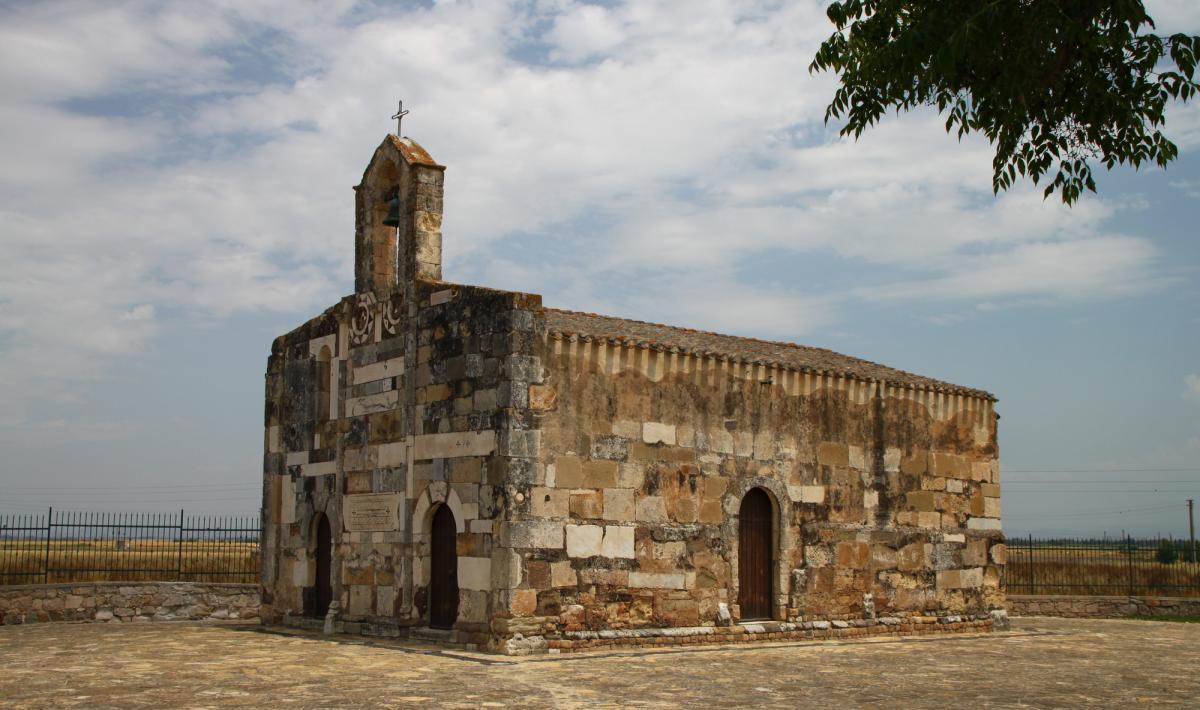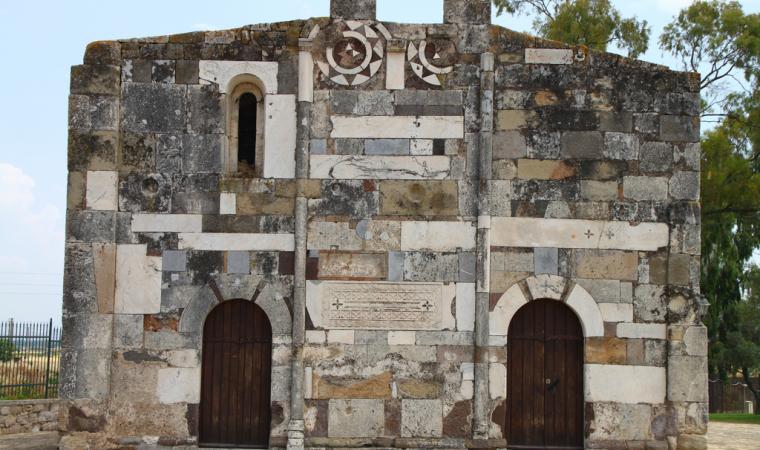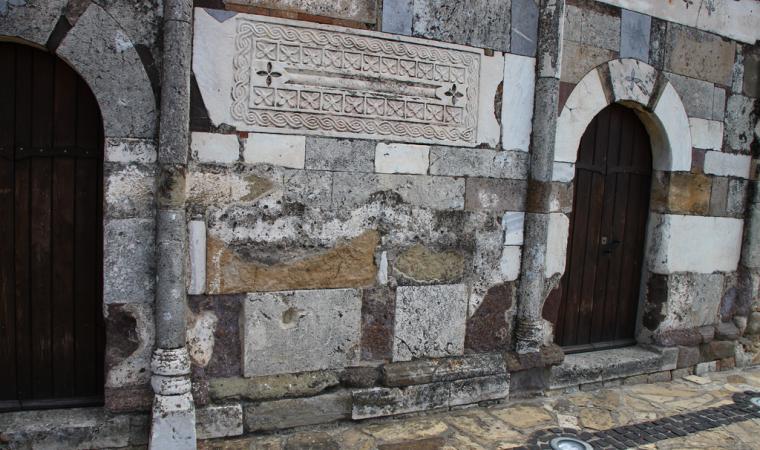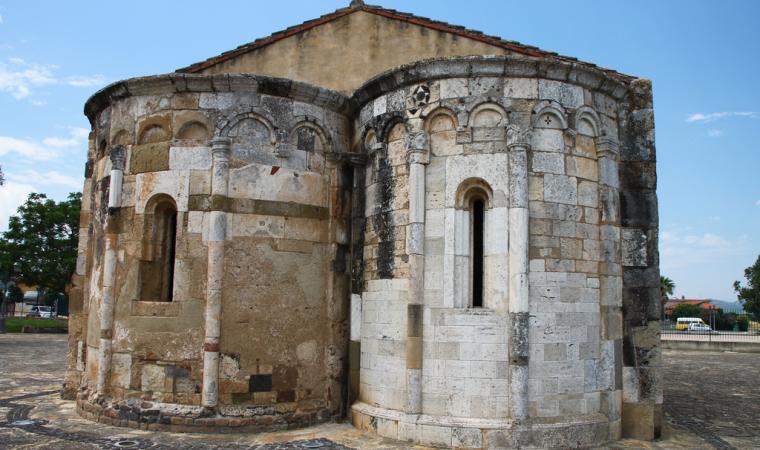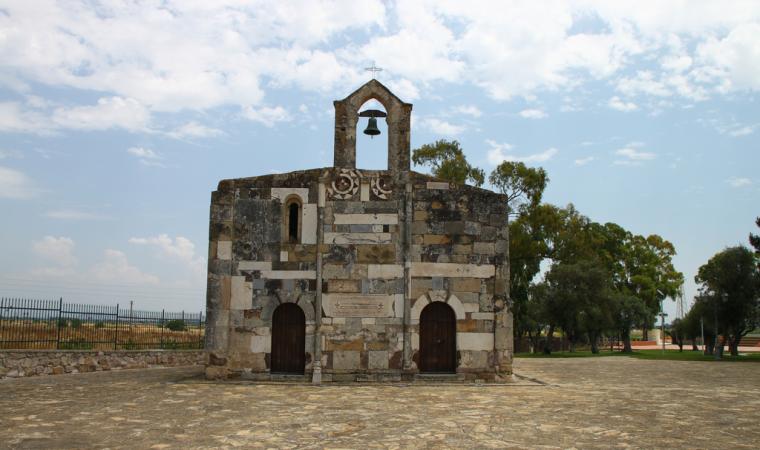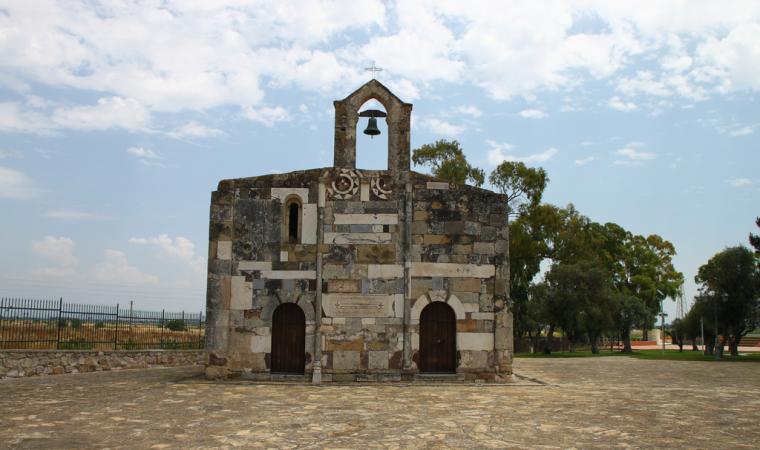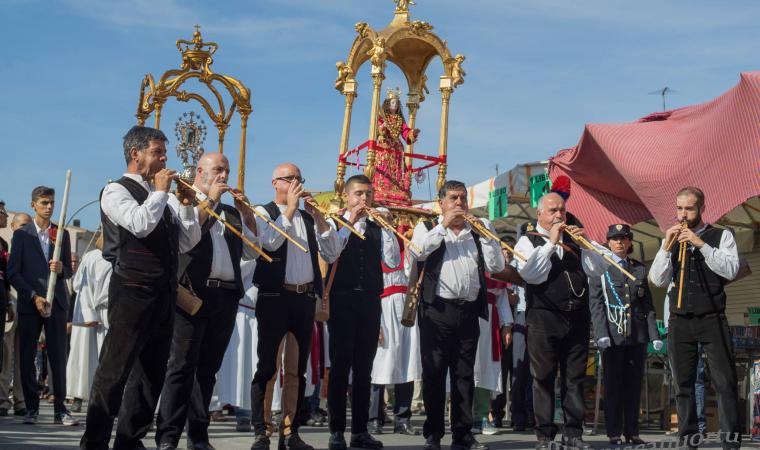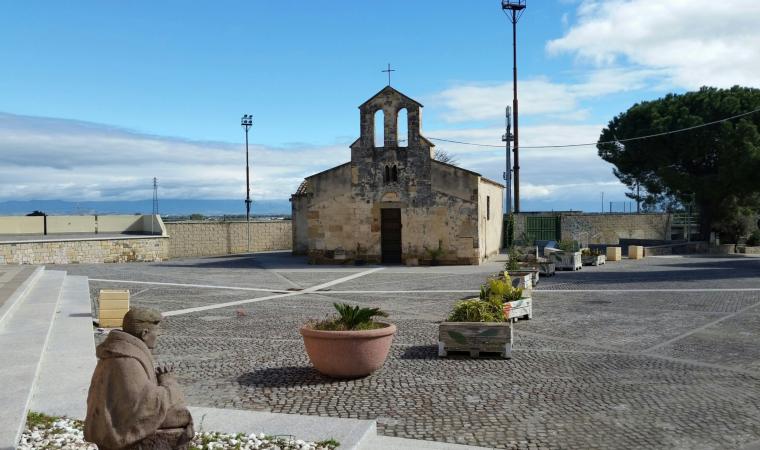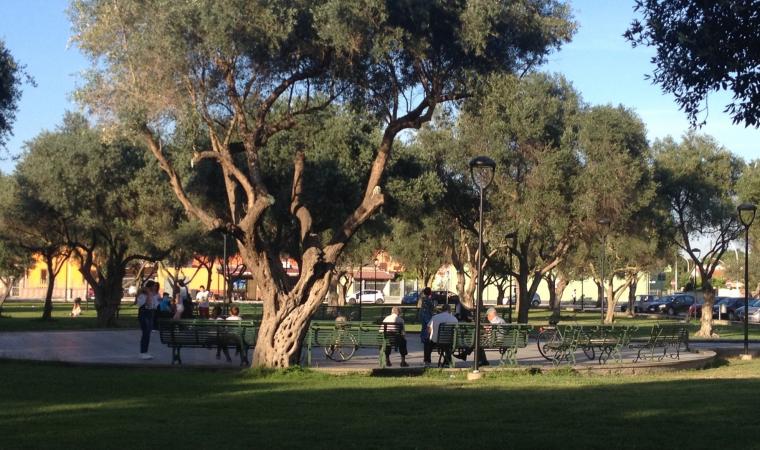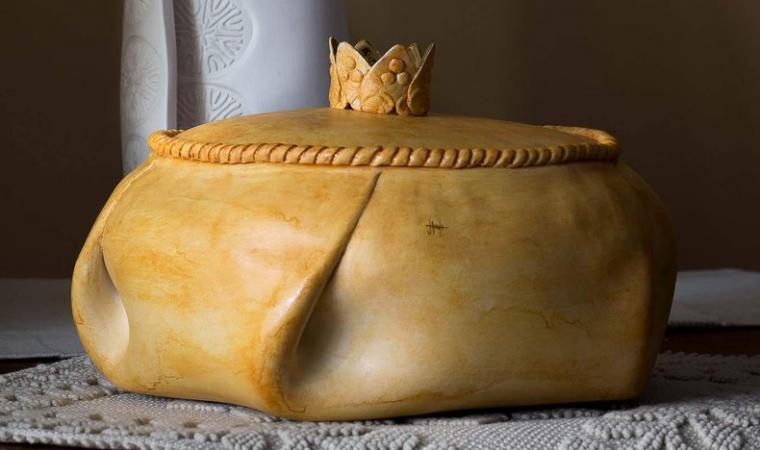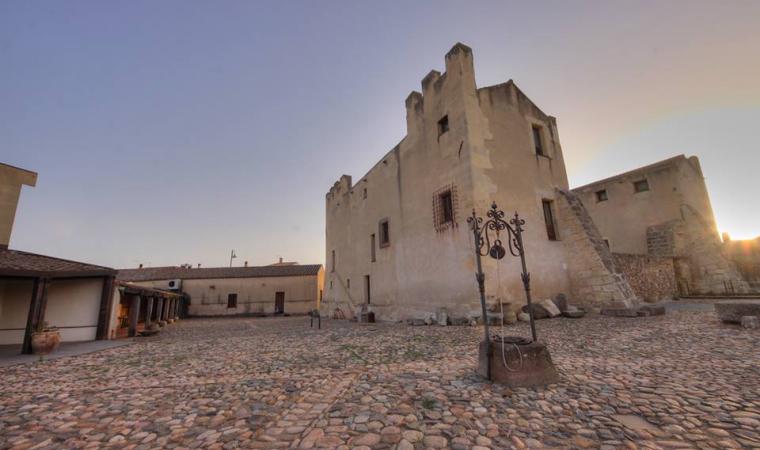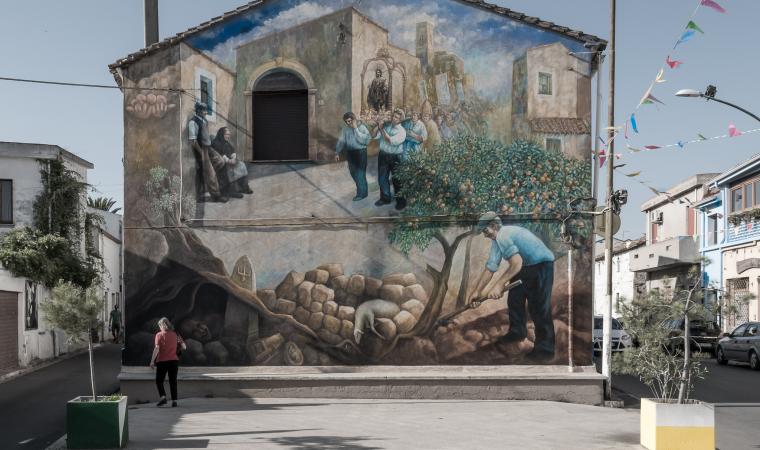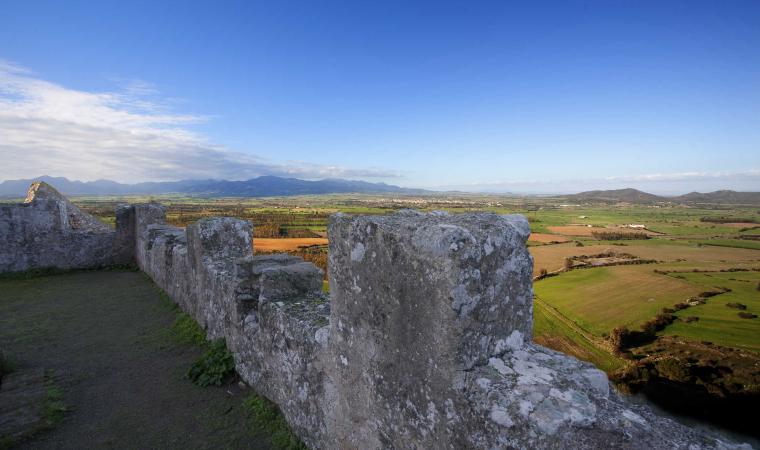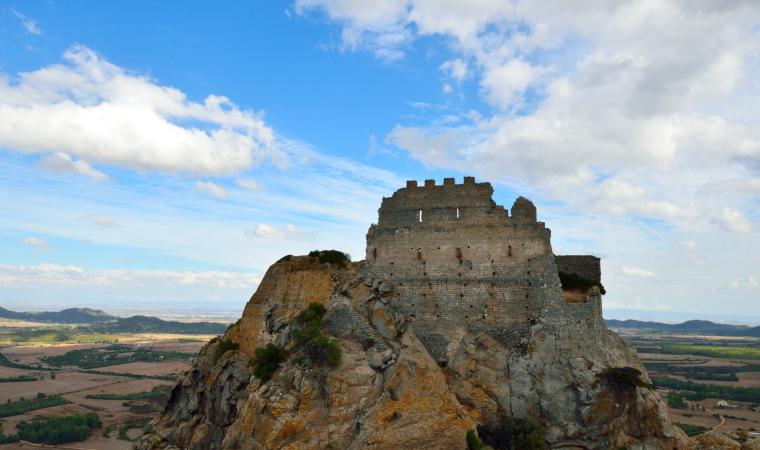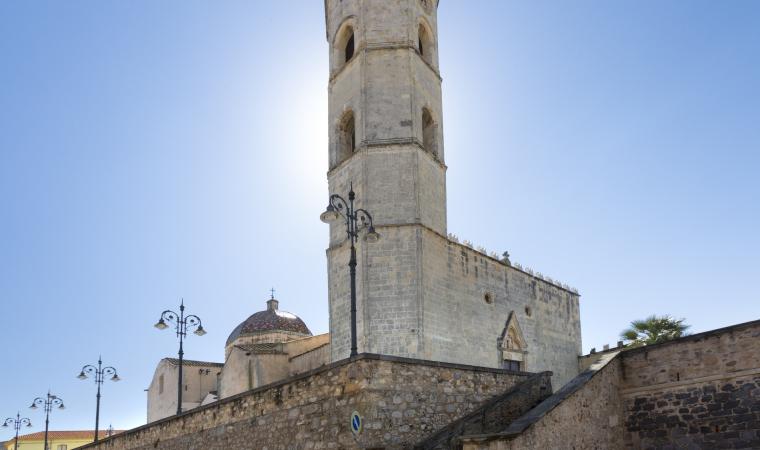The temple is dedicated to the African saint who, according to the tradition of the goccius (liturgical chants), was the brother of St. Antiochus, patron saint of Sardinia. The church of San Platano is a small building in Romanesque style that rises up in a park on the outskirts of Villaspeciosa, an agricultural village along the state highway 130, halfway between Cagliari and Iglesias. Built in the first quarter of the 12th century was the sanctuary Sancti Platani which, in 1141, was owned by the Benedictine monks of the Abbey of St Victor in Marseille. It is to them that we owe its construction, which not surprisingly reflects the characteristics of French mastery, as well as that of later Pisan Romanesque period. Throughout the centuries, it has undergone numerous restorations that have not changed its layout nor the priceless historical and artistic value.
The building, in calcareous stone, is characterised by inlaid decorations and pronounced chromatism due to the juxtaposition of bare marble inserts and the reutilisation, coming from the nearby site of San Cromazio, of the first Roman then early Christian chief and fascinating archaeological attraction of Villaspeciosa. The sculpted motifs are often the result of ad hoc revisitations to be employed in a temple of Christ. The gabled façade is tripartite with pilaster strips and surmounted by a belfry. In the side mirrors open two portals, one surmounted by a single-lancet window, whilst a marble slab is in the centre (originally an architrave from Roman times) re-sculptured with Byzantine-style interlacing. Above it is another Roman frieze with two wheels geometrically inlaid with black and white components. The rectangular hall is divided into two naves enclosed by semi-circular apses. Other rare similar cases are Santa Maria di Sibiola in Serdiana and San Gemiliano in Sestu. The naves are separated by three rounded arches, supported by columns with sculptured capitals, also reused, and by lesenes. The semi-columns of the apses also have classical capitals. On the walls, signs of the original barrel-vaulted ceilings can be seen, having collapsed in the 14th century and replaced by the current wooden roof. The altar is at the end of the southern nave, whilst at the end of the northern nave are the statues of the ‘brothers’ Antiochus and Platano. The interior of the sanctuary can be visited at the end of August, on the occasion of the celebrations of the two saints, the rituals for which have Byzantine origins. The life and miracles of Saint Platano are recounted in a mural at the entrance to the village. The festival takes place on two consecutive days, the last Sunday of the month and the following Monday: starting from the beautiful piazza before the church, with the two simulacra accompanying each other in a procession, amidst goccius and the sounds of launeddas. In the days before, the ancient rituals of the Sagra de s'Abiu (an alder food festival) can be seen.

